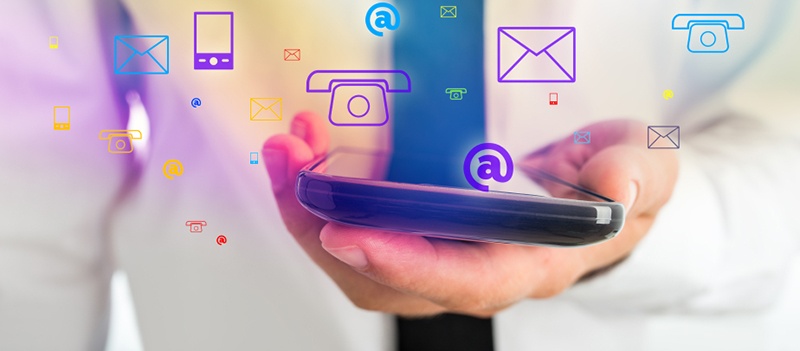1 min read
3 Ways Your Email Open Data is Tricking You, and What To Do About It
Today we have a guest post from Mike Donnelly. Mike is the founder of Seventh Sense, a SaaS platform designed to plug into your Hubspot account and...

“What do you want to be when you grow up?”
“Well… I dream of writing subject lines and emails that get people to open, click, and ultimately become sales-qualified.”
Those were my exact thoughts, stumbling the halls of Klem North Elementary in the late-90s.
No, but I did want to be a writer. And even though it wasn’t exactly my dream, the truth is that emails are most of what I write today. As a former copywriter turned marketing consultant, I regard email writing as a craft.
If you’re in marketing or advertising, I’m willing to bet you also understand the importance of solid, purpose-driven email writing. (If you’re not in marketing, you probably at least appreciate it, or notice the difference between a good and bad email. There are a lot of examples of the latter.)
Not something you hear every day. At LeadG2, we circulate good marketing emails that land in our professional inboxes and manage to make a positive impression. They are few and far between, but they exist! A lot of times they involve humor or striking design. Commonly they are brief and highly relevant to our jobs.
Why do we care so much about emails? We pay attention to great email writing and get excited by creative ideas because email can be a powerful part of the integrated campaigns we build for our clients.
Back in September, I attended INBOUND 2017 with the rest of the LeadG2 crew. From what I shared above, it should come as no surprise that I was looking forward to a workshop from HubSpot’s Director of Product, Tom Monaghan, entitled, “When I Grow Up, I Want to Be an Email Marketer (Said No Kid Ever).”
On the one hand, when I looked back at my notes as whole, nothing Tom said was particularly earth-shattering. (Sorry, Tom.) But on the other hand, his workshop did not disappoint. On top of covering some email trends and stats that caused a typing frenzy in the audience (hint: lunch-time is looking good for email opens), he helped me to step back and look at email marketing with fresh eyes.
If I could sum up what Tom had to say back at INBOUND 2017, here’s what it wasn’t:
What he did say (in so many words):
A bit more on each of these below.
I don’t know about you, but I start my day by clearing out my inbox. I skim through my list and from senders and subject lines alone, I delete a big chunk every morning. Some unsubscribing happens. A little of, “When did I sign up for this?” Brands that could’ve potentially kept me on board as a subscriber get the boot when I get too many emails that are irrelevant, presumptuous, or just plain annoying.
In his workshop, Tom said that if everyone in your database gets everything you send, at least 20% aren’t interested. That’s one in five people receiving your email. When you consider that 78% of consumers have unsubscribed because they are getting too many emails from a brand, that should make the red flag clear.
7am on a Tuesday or whatever time you’ve been scheduling every email, the point isn’t the time but rather that hard and fast rules don’t apply to things like message delivery time (except obvious ones, like don’t send your text or email in the middle of the night). Yes, there’s plenty of research that can guide your email scheduling strategy—but you’re not the only one with access to it. As marketers do their homework and everyone sends their email on Tuesday morning, the best times become the worst times.
In his talk at INBOUND 2017, Tom urged us to not take notes as he rattled off stats on times that currently perform well for email opens. He called the practice of scheduling emails for the most popular times as a “race to the bottom of the inbox.”
This can look like a lot of things, but if you’re hitting the clone button for every email, you’re definitely guilty of lazy email marketing. Cloning emails can save precious time, but not everything you send should look the same. For example, your weekly newsletter should look and feel very different from time-sensitive promotions or updates. Using the same template or general structure again and again contributes to reader fatigue.
Do you think you’d really send an email to your friend with the subject line, “You’re going to love these deals, Karen”...? Personalization tokens can make an email more relevant, but use them sparingly. And always consider the lesson, “Just because you can, doesn’t mean you should.” (If you’re using emojis in your subject lines, please do me a favor and kick that habit in 2018.)
Of course, don’t pretend to be something you’re not. You can own that it's a marketing email without coming across like a robot. Don’t overthink it, but do read everything aloud before you send or schedule. Does it sound weird, or like a fake news article from Facebook? Start again.
At this point you might be thinking, “OK, I can switch up my schedule, build different templates, and proofread to avoid sounding creepy—what about that first part?”
Takeaway #1—stop sending everything to everyone—is a topic that deserves dedicated attention.
It can be difficult to accept that not everyone in your database wants to get every email you send, and challenging to start to segment your list and build custom campaigns. But it’s nevertheless an important step to be able to send meaningful, relevant (dare I say great) marketing emails.
I’ll be exploring list re-engagement in a future post with more takeaways from Tom’s INBOUND 2017 talk. Check back soon!

1 min read
Today we have a guest post from Mike Donnelly. Mike is the founder of Seventh Sense, a SaaS platform designed to plug into your Hubspot account and...

Despite the rise (and occasional fall) of numerous other marketing platforms in the past few decades, email marketing is a steadfast staple that...

Email Marketing is not just a bunch of hocus pocus. According to HubSpot, 99% of consumers check their email every single day, and it is the...